Sustainability Initiatives
Sustainability initiatives are becoming increasingly pivotal within the Conveyor Belt Market. Companies are now prioritizing eco-friendly materials and energy-efficient designs in their conveyor systems. The shift towards sustainable practices is driven by regulatory pressures and consumer demand for greener solutions. For example, the use of recycled materials in the production of conveyor belts is gaining traction, which not only reduces waste but also lowers the carbon footprint associated with manufacturing. Recent statistics suggest that the market for sustainable conveyor solutions is expected to expand significantly, with a projected growth rate of around 6% annually. This focus on sustainability not only aligns with corporate social responsibility goals but also enhances brand reputation, making it a crucial driver for the Conveyor Belt Market.
Technological Advancements
The Conveyor Belt Market is experiencing a notable transformation due to rapid technological advancements. Automation and smart technologies are increasingly integrated into conveyor systems, enhancing efficiency and reducing operational costs. For instance, the adoption of IoT-enabled conveyor belts allows for real-time monitoring and predictive maintenance, which can significantly minimize downtime. According to recent data, the market for automated conveyor systems is projected to grow at a compound annual growth rate of approximately 7.5% over the next five years. This trend indicates a shift towards more sophisticated systems that not only improve productivity but also ensure safety in material handling processes. As industries seek to optimize their operations, the demand for technologically advanced conveyor belts is likely to rise, further propelling the Conveyor Belt Market.
Increased Demand from E-commerce
The surge in e-commerce activities is significantly influencing the Conveyor Belt Market. As online shopping continues to gain popularity, logistics and warehousing sectors are expanding rapidly to meet consumer expectations for faster delivery. This growth necessitates the implementation of efficient material handling systems, including advanced conveyor belts that streamline sorting and distribution processes. Recent data indicates that the logistics sector is projected to grow by over 10% annually, which directly correlates with the rising demand for conveyor systems. Companies are investing in automated conveyor solutions to enhance throughput and reduce labor costs, thereby driving innovation within the Conveyor Belt Market. This trend underscores the critical role that conveyor systems play in supporting the evolving landscape of e-commerce.
Customization and Diversification
Customization and diversification are emerging as key drivers in the Conveyor Belt Market. As industries evolve, there is a growing need for conveyor systems that cater to specific operational requirements. Manufacturers are increasingly offering tailored solutions that address unique challenges faced by various sectors, such as food processing, mining, and logistics. This trend is reflected in the rising demand for specialized conveyor belts, which are designed to handle diverse materials and withstand harsh environments. Market analysis indicates that the segment for customized conveyor solutions is likely to witness a growth rate of approximately 8% over the next few years. This emphasis on customization not only enhances operational efficiency but also positions companies to better meet the demands of their clients, thereby driving the Conveyor Belt Market forward.
Expansion of Manufacturing Sector
The expansion of the manufacturing sector is a crucial driver for the Conveyor Belt Market. As economies recover and industrial activities ramp up, there is an increasing need for efficient material handling solutions. Conveyor belts are integral to various manufacturing processes, facilitating the movement of goods and materials across production lines. Recent reports suggest that the manufacturing sector is expected to grow at a rate of approximately 5% annually, which will likely boost the demand for conveyor systems. This growth is particularly evident in industries such as automotive, electronics, and consumer goods, where the need for streamlined operations is paramount. Consequently, the Conveyor Belt Market stands to benefit from this expansion, as manufacturers seek to enhance productivity and reduce operational costs.


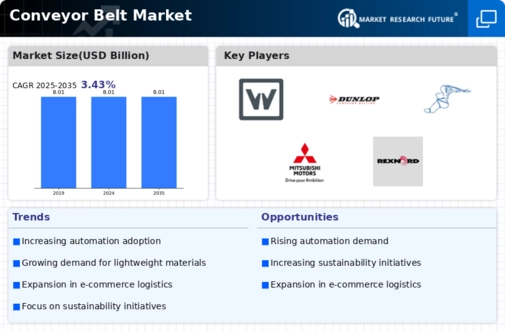
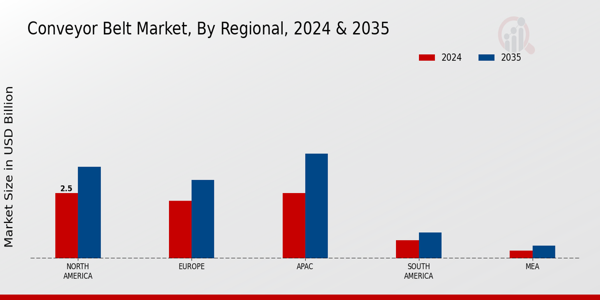


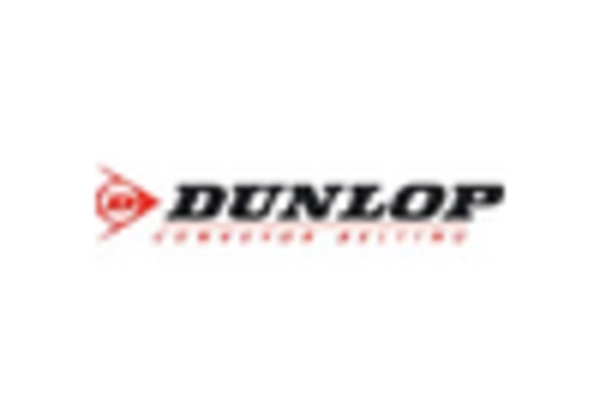

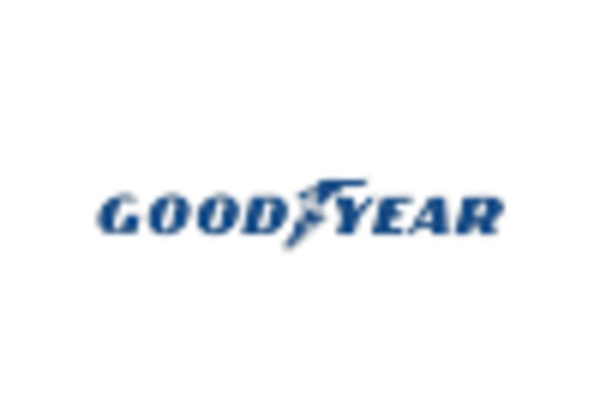
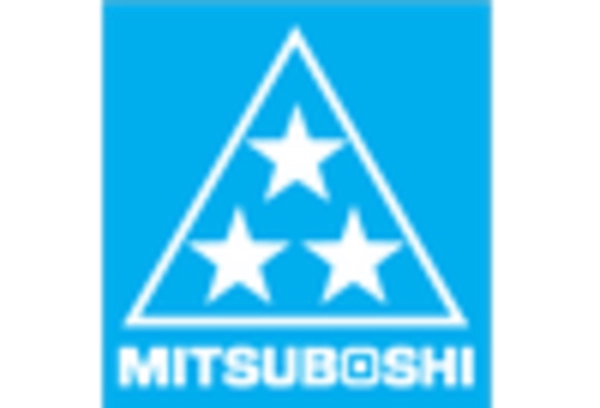








Leave a Comment